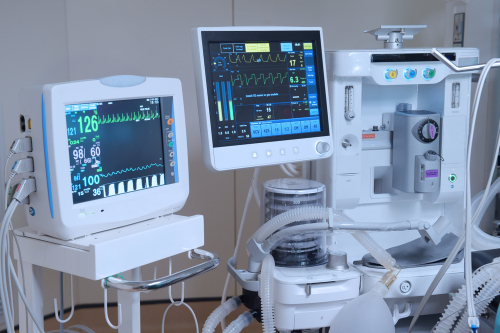Stryker Corporation (NYSE: SYK) has a long dividend history, and it might make a great addition to an income portfolio. Let’s take a look at the business, dividend history, and payout safety going forward.
Stryker’s Business Overview and Highlights
Stryker is a fortune 500 medical technologies company. The $71 billion business produces joint replacement implants, surgical equipment, and various other medical devices. The company is based out of Michigan, and it employs 36,000 people. Last year Stryker pulled in $14 billion in sales and that breaks down to $378,000 per employee.
The company maintains a solid credit rating (A) from the S&P. This allows Stryker to issue cheap debt to expand operations and pay dividends.
Stryker recently increased its dividend for a 25th straight year. This is in part thanks to Chairman emeritus, John Brown, and CEO, Kevin Lobo.
In December, Lobo announced the dividend increase: “We continue to deliver strong financial results, and consistent with our stated capital allocation philosophy, are raising our dividend 11%.”
Stryker’s 10-Year Dividend History
The company paid investors $0.25 per share a decade ago. Over the last 10 years, the dividend has climbed to $1.88. That’s an impressive 652% increase and you can see the annual changes below…

The compound annual growth is 22.4% over 10 years… but over the last year, the dividend climbed 10.6%. The slowdown in dividend growth isn’t a great sign. But, overall, Stryker’s steady growth might be a good income investment. Let’s take a look at the yield…
Stryker’s Current Yield vs. 10-Year Average
Stryker’s long history of paying dividends makes it one of the best dividend stocks around. By hiking their dividend for a 25th straight year they’ve joined the dividend aristocrat club.
The dividend yield a great indicator of value. A higher yield is generally better for buyers, but sustainability is also vital. We’ll look at that soon.
The dividend yield comes in at 1.1% and that’s below the 10-year average of 1.44%. The chart below shows the dividend yield over the last 10 years…

The lower yield shows that investors have bid up the company’s market value. They might be expecting higher growth and payouts. But more often than not, the dividend yield is mean reverting with share price changes.
Improved Dividend Safety Check
Many investors look at the payout ratio to determine dividend safety. They look at the dividend per share divided by the net income per share. So, a payout ratio of 60% would mean that for every $1 Stryker earns, it pays investors $0.60.
The payout ratio is a good indicator of dividend safety, because accountants can manipulate net income. They adjust for goodwill, and other non-cash items. A better metric is free cash flow.
Here’s Stryker’s payout ratio based on free cash flow over the last 10 years…

The ratio is volatile over the last 10 years, and the trend is up. The last reported year shows a payout ratio of 34.5%. This gives plenty of room for Stryker’s board of directors to continue raising the dividend.
Given that Stryker is a newly minted dividend aristocrat, it is safe to assume they will continue the trend of dividend growth. Also, medical device sales will only grow going forward, and they have established relationships within the industry.
Stryker is a solid pick for dividend growth investors.
Good investing,
Robert
